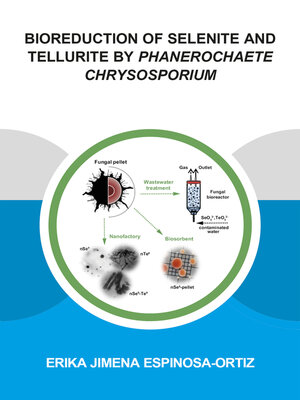Bioreduction of Selenite and Tellurite by Phanerochaete Chrysosporium
ebook ∣ IHE Delft PhD Thesis Series
By Erika Jimena Espinosa-Ortiz

Sign up to save your library
With an OverDrive account, you can save your favorite libraries for at-a-glance information about availability. Find out more about OverDrive accounts.
Find this title in Libby, the library reading app by OverDrive.



Search for a digital library with this title
Title found at these libraries:
| Library Name | Distance |
|---|---|
| Loading... |
Selenium (Se) and tellurium (Te) are metalloids of commercial interest due to their physicochemical properties. The water soluble oxyanions of these elements (selenite, selenate, tellurite and tellurate) exhibit high toxicities; hence, their release in the environment is of great concern.
This study demonstrates the potential use of fungi as Se- and Te-reducing organisms. The response of Phanerochaete chrysosporium to the presence of selenite and tellurite was evaluated, as well as its potential application in wastewater treatment and production of nanoparticles. Growth stress and morphological changes were induced in P. chrysosoporium when exposed to selenite and tellurite. Synthesis of Se0 and Te0 nanoparticles entrapped in the fungal biomass was observed, as well as the formation of unique Se0-Te0 nanocomposites when the fungus was cultivated concurrently with Se and Te. The response of P. chrysosporium to selenite exposure was investigated in different modes of fungal growth (pellets and biofilm). A bioprocess for selenite removal and Se0 nanoparticles recovery using an up-flow fungal pelleted reactor was developed. 70% selenite removal (10 mg Se L-1 d-1) was achieved under continuous mode. The use of Se0 nanoparticles immobilized in P. chrysosporium pellets as a new sorbent material for the removal of heavy metals from wastewater was demonstrated.







